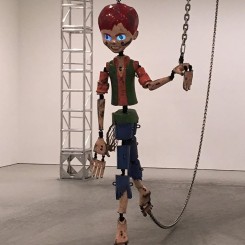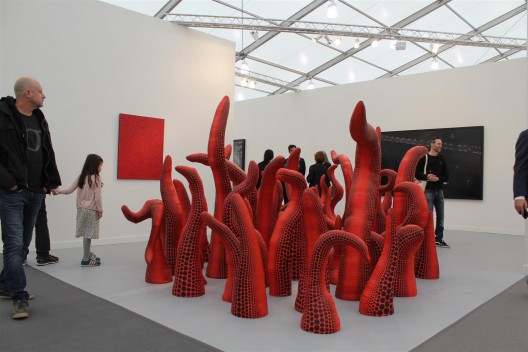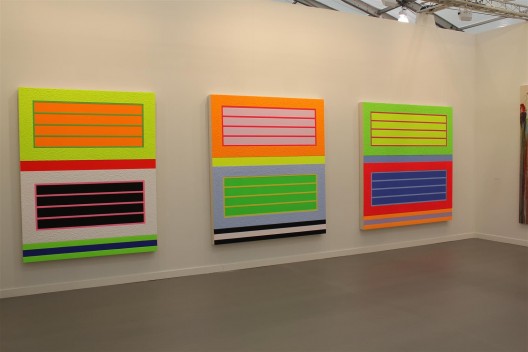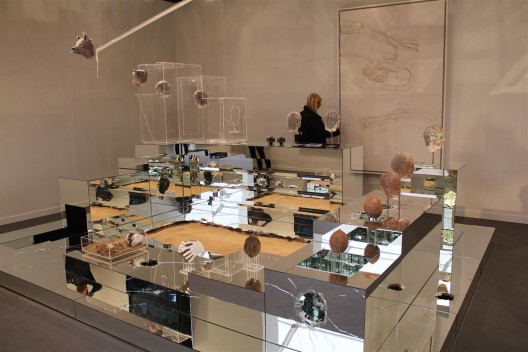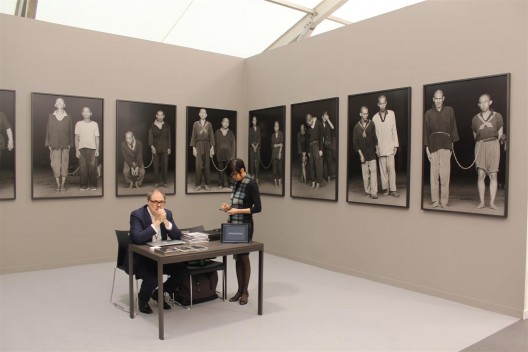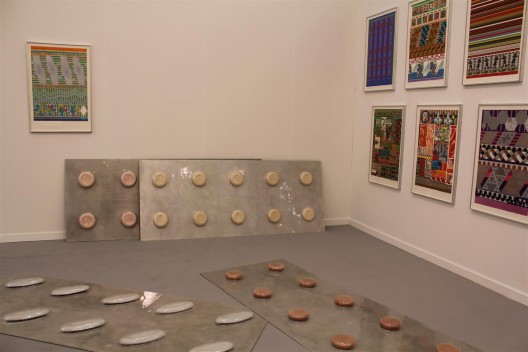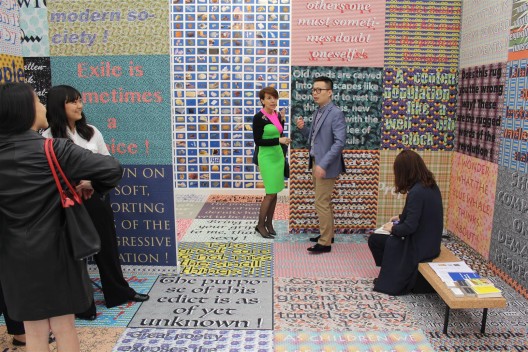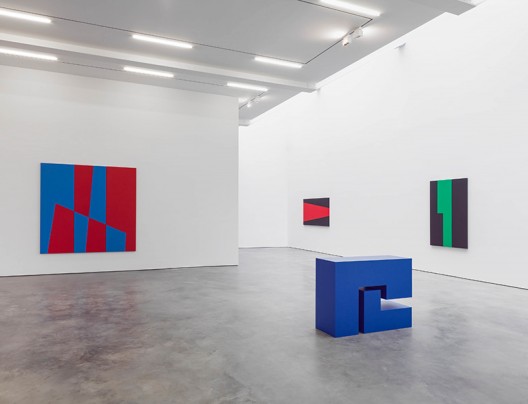Frieze is the major-league British art fair pitched physically in tents—during spring in New York and autumn in London—and aesthetically between emerging art fairs like NADA, Independent and Art Basel’s museum-oriented booths. In the past, this has meant a colorful cocktail that might include plasticine works alongside something by Pipilotti Rist or Tobias Rehberger. This year, however, the content at Frieze New York felt mostly polarized between some expensive and attention-grabbing (if not necessarily grandiose) works and a broader field of modestly sized paintings and sculptures that were pretty and relatively more softly priced—an alarming situation for artists, as if an art fair isn’t dismaying enough. The timid offerings also raised a resounding confirmation of how slow the market is for galleries. It seems Frieze may have lost its edge—at least in New York, where it is the most talked-about art fair in a city that might not need them.
Victoria Miro’s customary Yayoi Kusama import this year took the form of a grove of red tentacles rising from the floor. In its usual spot at the south end of the tent, Gagosian had a mixed bag of Damien Hirsts, including a golden-horned ram in formaldehyde. Offsetting the erstwhile livestock was a donkey in a pen (with a chandelier) as part of the Projects, recreating Maurizio Cattelan’s 1994 show at Daniel Newburg Gallery in New York. Meanwhile, low-maintenance paintings could be found in booths ranging from the likes of Almine Rech (“I have a ski suit that looks like that,” remarked one collector in passing) to David Kordansky, Pilar Corrias, Eigen + Art and Blum & Poe.
Among the more memorable displays were a huge mirrored installation by David Altmejd at Andrea Rosen, a photographic triptych by Adrian Piper at Dominique Lévy, and a series of photographs called The Chain by Chien-Chi Chang at Chi-Wen Gallery, which is determined to show work that is socially engaged—this series documents the treatment of mental patients in a private institution in Taiwan during the 1990s. At Clearing, giant pill packets by Marina Pinsky were juxtaposed with technicolor prints by Eduardo Paolozzi.
From mainland China, Long March Space was conspicuously absent. ShanghART, however, made the most of their first appearance at Frieze New York with new works by Xu Zhen alongside quieter pieces by Ding Yi and Zhang Ding. Leo Xu had wallpapered his booth with fabric panels drawn from Liu Shiyuan‘s “From Happiness to Whatever” project (previously shown also at Yuz Museum in Shanghai); Antenna Space installed a triptych of enlarged iPhone-screen-shaped kites each with a video hanging in front by Li Ming.
As always, the fair galvanized the city beyond Randall’s Island, provoking a host of new exhibitions and parties. The blue-chip highlight this time was Lisson Gallery opening its brand new space in Chelsea on May 2 with a pristine though somewhat placid show of abstract paintings by Carmen Herrera. On the Thursday, visitors queued along the street outside David Zwirner to watch the macabre choreography of Jordan Wolfson’s “Colored Sculpture”—perhaps the closest Frieze week came to shocking, or even surprising its visitors.
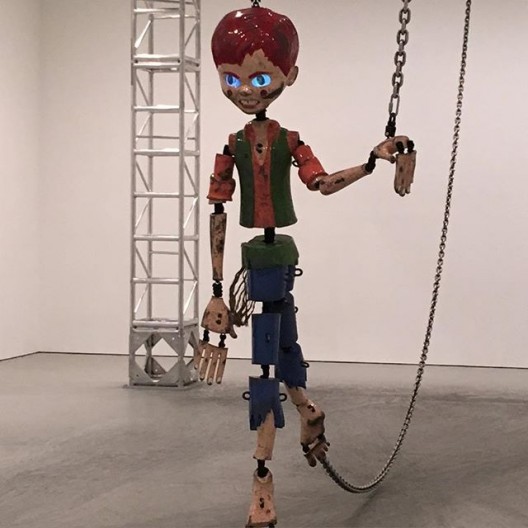
Jordan Wolfson’s “Colored Sculpture”. Photo: W Magazine
